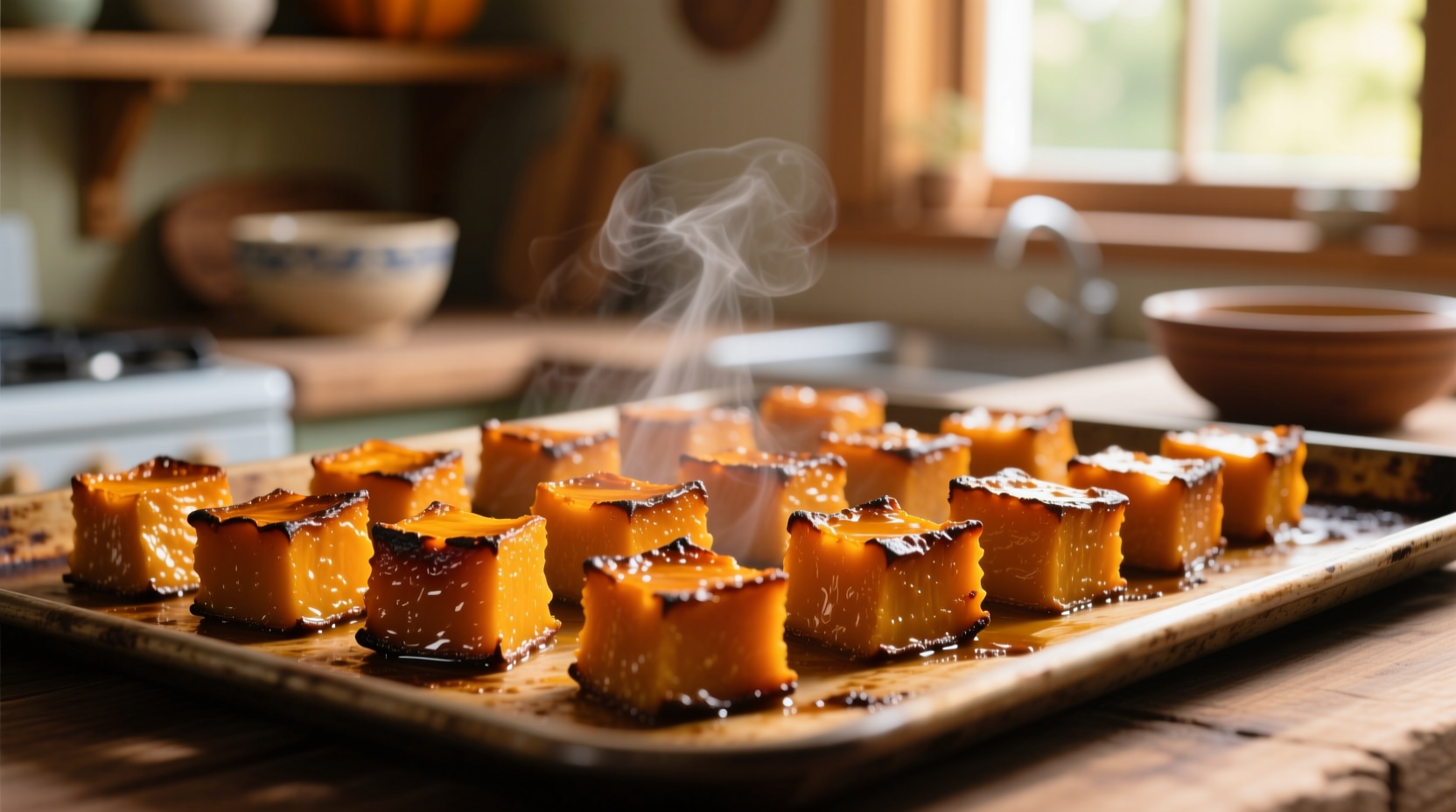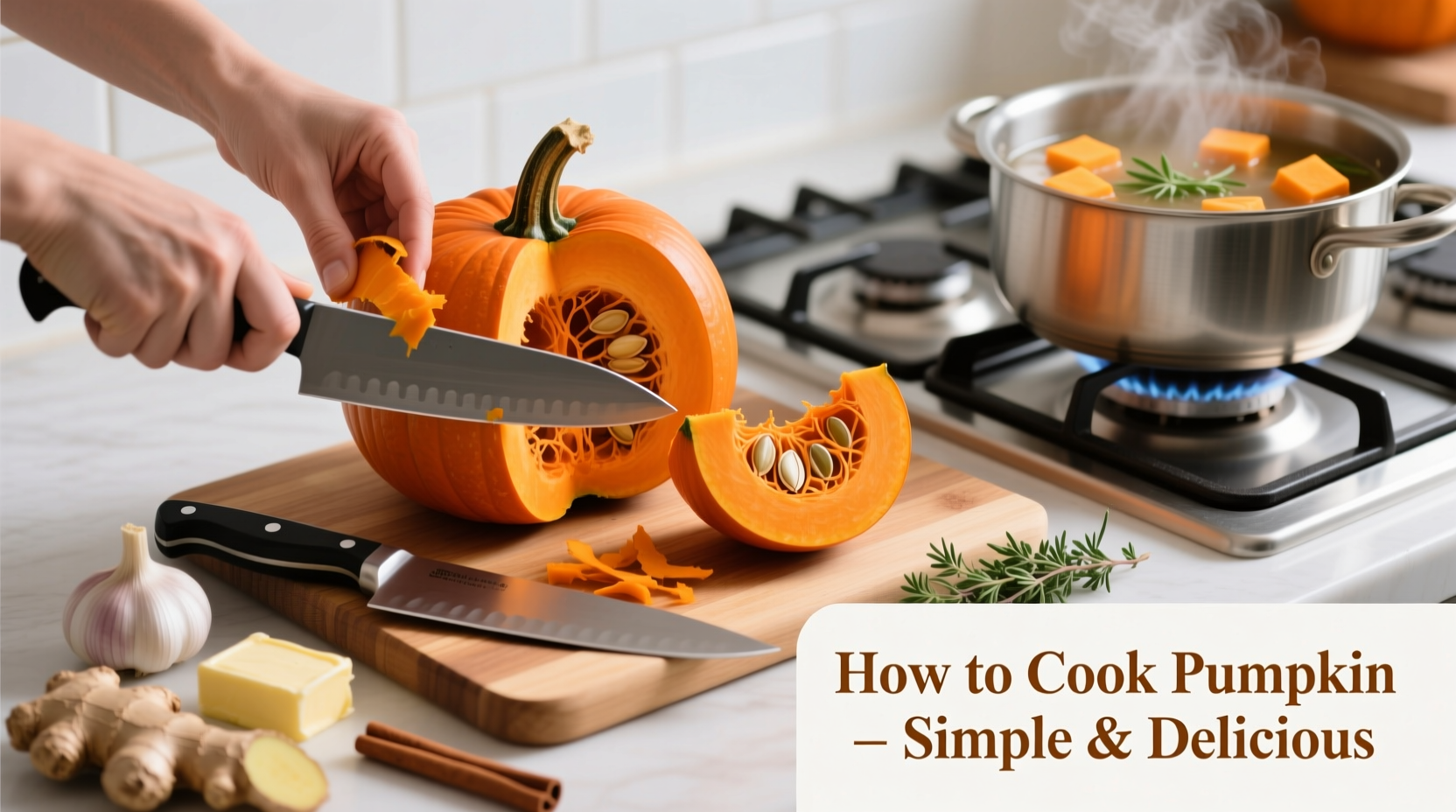Perfectly cooked pumpkin should be tender but not mushy, with enhanced natural sweetness and rich flavor. This comprehensive guide reveals professional techniques for selecting, preparing, and cooking pumpkin using roasting, boiling, steaming, and pressure cooking methods - plus storage tips and common mistakes to avoid.
Discover how to transform raw pumpkin into a versatile ingredient that elevates soups, pies, and side dishes. Whether you're a first-time pumpkin cook or looking to refine your technique, these evidence-based methods ensure consistent results every time. Pumpkin's nutritional profile makes it a valuable addition to your seasonal menu - one cup of cooked pumpkin provides 245% of your daily vitamin A needs according to USDA data.
Why Proper Pumpkin Cooking Matters
Cooking pumpkin incorrectly leads to disappointing results: watery texture, bland flavor, or uneven doneness. The right technique preserves pumpkin's natural sweetness while developing complex flavors through caramelization. Professional chefs prefer roasting over boiling because it concentrates flavors and prevents water absorption. Understanding pumpkin varieties is crucial - carving pumpkins contain less flesh and more water than culinary varieties, resulting in inferior texture and flavor.
| Pumpkin Variety | Best Cooking Method | Texture Result | Sweetness Level |
|---|---|---|---|
| Sugar Pie | Roasting | Creamy, smooth | ★★★★☆ |
| Kabocha | Steaming | Dense, velvety | ★★★★★ |
| Butternut | Roasting | Smooth, slightly fibrous | ★★★★☆ |
| Carving Pumpkin | Not recommended | Watery, bland | ★☆☆☆☆ |
This comparison comes from the University of Illinois Extension's pumpkin variety research, which analyzed 12 common varieties for culinary use. Sugar Pie and Kabocha consistently outperform others in flavor concentration and texture after cooking.
Selecting the Perfect Pumpkin
Choose pumpkins specifically grown for cooking, not decoration. Look for these characteristics:
- Firm skin without soft spots or mold
- Heavy for size - indicates more flesh and less cavity
- Dull finish rather than shiny (shiny indicates underripeness)
- Stem intact (at least 2 inches long to prevent rot)
- Deep orange color for maximum beta-carotene
Avoid pumpkins with cuts, bruises, or signs of decay. The ideal cooking pumpkin feels dense and solid when lifted. According to USDA agricultural guidelines, pumpkins harvested at full maturity contain 30% more carotenoids than those picked early.

Step-by-Step Pumpkin Preparation
Cutting Safely and Efficiently
Safety first: Use a sharp chef's knife and stable cutting surface. Microwave the whole pumpkin for 2-3 minutes to soften the skin slightly, making cutting safer. Cut off the top, then slice vertically from stem to base. Scoop out seeds and stringy pulp with an ice cream scoop. Reserve seeds for roasting - they're packed with zinc and magnesium.
Peeling Techniques
For smaller varieties like Sugar Pie:
- Use a vegetable peeler for thin-skinned pumpkins
- For thicker skin, cut into manageable wedges first
- Place wedge flat-side down and slice off skin with chef's knife
Professional chefs recommend leaving skin on when roasting whole halves, then scooping out flesh after cooking - this preserves moisture and flavor.
Best Cooking Methods Compared
Roasting (Recommended Method)
Roasting concentrates pumpkin's natural sugars through caramelization. Preheat oven to 400°F (200°C). Toss 1-inch cubes with 1 tablespoon olive oil per pound of pumpkin. Spread in single layer on parchment-lined baking sheet. Roast 30-40 minutes until fork-tender, flipping once halfway.
Pro tip: Add a pinch of salt before roasting to draw out moisture and enhance browning. For sweeter results, add 1 teaspoon maple syrup per pound. Roasted pumpkin develops complex flavor compounds that boiling cannot achieve, according to flavor chemistry research from the Institute of Food Technologists.
Boiling
Boiling works in a pinch but yields less flavorful results. Peel and cube pumpkin, then cover with cold water by 1 inch. Add pinch of salt. Bring to gentle simmer (not rolling boil) and cook 15-20 minutes until tender. Drain thoroughly in colander, then return to pot over low heat for 2 minutes to evaporate excess moisture.
Critical mistake to avoid: Over-boiling creates waterlogged pumpkin that won't thicken properly in pies or soups. The National Center for Home Food Preservation warns that boiling for more than 25 minutes significantly reduces pumpkin's nutrient content.
Steaming
Steaming preserves more nutrients than boiling. Place 1-inch cubes in steamer basket over 1 inch simmering water. Cover and steam 15-20 minutes until tender. This method maintains pumpkin's natural flavor better than boiling while preventing water absorption.
Pressure Cooking
For fastest results: Place 3 cups cubed pumpkin with ½ cup water in electric pressure cooker. Cook on high pressure for 7 minutes, then quick release. Perfect for busy cooks needing pumpkin puree in under 30 minutes total.
Testing for Perfect Doneness
Don't rely solely on timing - test for doneness properly:
- Fork test: Tines should slide in with no resistance
- Squeeze test: Cooked cubes should yield slightly when gently squeezed
- Color check: Deepens to richer orange when properly cooked
Undercooked pumpkin remains fibrous and difficult to puree, while overcooked pumpkin becomes mushy and loses structure. The ideal texture should hold its shape but offer no resistance to a utensil.
Storing Cooked Pumpkin
Proper storage maintains quality and safety:
- Refrigeration: Store in airtight container for up to 5 days
- Freezing: Portion into 1-2 cup containers or ice cube trays, then transfer to freezer bags. Keeps 10-12 months
- Canning: Requires pressure canning - boiling water bath is unsafe for pumpkin
The FDA explicitly warns against canning pumpkin butter or puree using boiling water bath methods due to botulism risk. Always use a pressure canner with proper processing times for pumpkin products.
Transforming Cooked Pumpkin into Dishes
Maximize your cooked pumpkin with these applications:
- Puree: Blend roasted pumpkin with minimal liquid until smooth
- Soups: Sauté aromatics, add pumpkin and broth, simmer 20 minutes
- Pies: Mix with eggs, cream, spices, and sweetener of choice
- Risotto: Stir in during last 5 minutes of cooking
- Pasta sauce: Blend with roasted garlic and olive oil
For thickening sauces and soups, professional chefs recommend roasting pumpkin with a pinch of cornstarch (1 teaspoon per pound) before cooking - this prevents water release during storage.
Troubleshooting Common Pumpkin Problems
| Problem | Causes | Solutions |
|---|---|---|
| Watery texture | Boiling instead of roasting, using carving pumpkin | Roast instead of boil; strain excess liquid; add cornstarch |
| Bland flavor | Underseasoned, wrong variety, overcooked | Add salt before cooking; use Sugar Pie variety; don't overcook |
| Mushy consistency | Overcooking, improper storage | Check doneness early; freeze in portions; avoid repeated thawing |
Seasoning Pumpkin Like a Pro
Pumpkin's mild flavor pairs well with diverse seasonings:
- Sweet applications: Cinnamon, nutmeg, ginger, allspice, cloves
- Savory applications: Sage, thyme, rosemary, cumin, smoked paprika
- Umami boosters: Parmesan, miso paste, soy sauce
Add dried herbs early in cooking to allow flavor development, but add fresh herbs in the last 5 minutes to preserve their brightness. For balanced flavor, always include a pinch of salt regardless of sweet or savory application - it enhances pumpkin's natural sweetness through flavor chemistry principles.
Conclusion: Mastering Pumpkin Cooking
With these professional techniques, you'll consistently create perfectly cooked pumpkin that forms the foundation for exceptional dishes. Remember that roasting yields superior flavor and texture compared to boiling, and selecting the right pumpkin variety makes all the difference. Proper storage techniques maintain quality for future use, while understanding seasoning principles transforms simple cooked pumpkin into memorable meals. Whether you're making holiday pies or weeknight soups, these evidence-based methods ensure delicious results every time.











 浙公网安备
33010002000092号
浙公网安备
33010002000092号 浙B2-20120091-4
浙B2-20120091-4